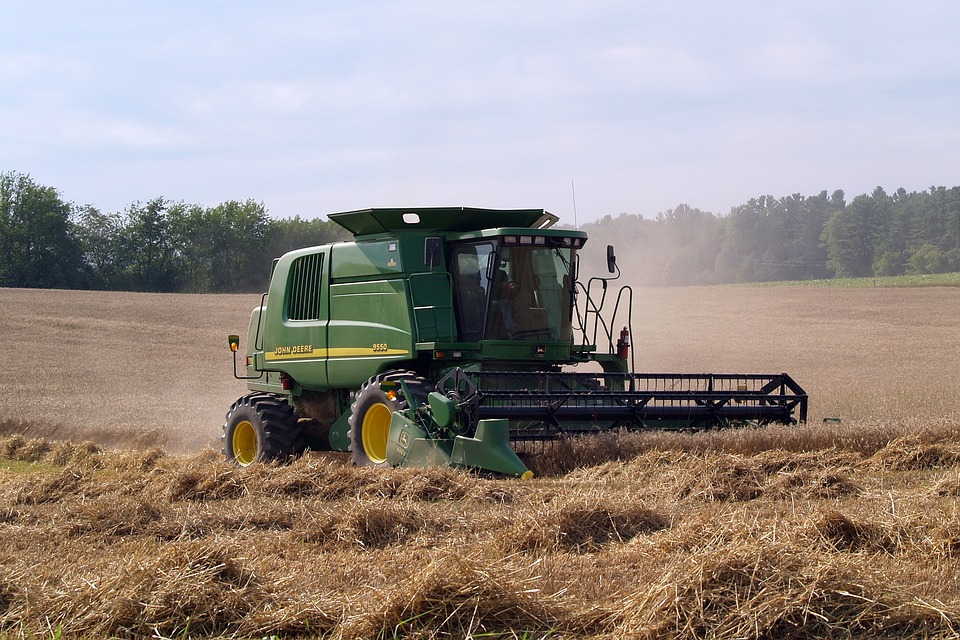With the weather slightly improving over the coming days, many tillage farmers will be making a dash for the harvest finishing line, certainly where wheat is concerned.
Teagasc is strongly advising growers to concentrate on harvesting grain; getting winter wheat and relevant spring barley crops combined is a priority.
Later-sown crops of spring barley continue to look disappointing for this harvest. Both grain and straw yields do not look promising.
In addition, the strong prospect of these crops coming in with high protein values puts a major question mark on their suitability for brewing or distilling.
Thereafter, it will be a case of baling straw and making preparation for the 2023/2024 winter oilseed rape planting season which is just around the corner.
Met Éireann is predicting that high pressure will build across the country over the coming days with temperatures to exceed 20°C tomorrow (Wednesday, August 16) and Thursday (August 17).
Forage maize harvest
Meanwhile, crops of forage maize remain on course to produce tremendous yields.
This is certainly the case in Northern Ireland, where the total area dedicated to the crop is estimated to be up 10%, year-on-year.
Maizetech’s Robert Duncan commented: “We also saw an increase of a similar magnitude for 2021 into 2022. Driving all of this is a combination of two factors – the return of growers and new farmers looking at maize for the first time.”
According to Duncan, the cold and wet conditions of late April into May encouraged arable farmers to look at maize, rather than spring barley.
“And they made the right decision,” he continued.
“Yes, maize planted this year was a fortnight or so behind where crops would have been in 2022. But the dry, warm conditions that followed in June were a real game changer.
“The moisture trapped below the film put in place at planting meant that newly germinated crops had full access to the heat and moisture they needed to maximise germination and subsequent early growth rates.”
Duncan specifically cites the availability of new compostable films as a key step forward in maximising the potential of maize crops grown in Northern Ireland.

“The new materials provide the young crops with all the protection that they need. But at the same time, they allow the growing plants to break through so much easier,” Duncan added.
“As a consequence, crop development is in no way hindered.”
Previously, crops grown under the old ‘oxo’ films would have been prone to heat stress during periods of very hot weather.
In the past, growers would have had no option but to physically cut open the film to allow the growing maize plants push through.
“This is no longer the case,” the Maizetech representative said.
“Another advantage of the new films is that they are extremely biodegradable.
“Little or no evidence of the film used at planting will be visible, above or below ground, 10-12 weeks after planting.”
Robert Duncan also points to the fact that forage maize is no longer a marginal crop in Northern Ireland in terms of its harvest potential.
“Companies like Pioneer have committed to breeding new maize varieties that are totally suited to northern Europe and Scandinavia. And Northern Ireland is benefiting accordingly in this regard,” he said.
“It is perfectly feasible for local farmers to grow crops of maize that will produce between 16t to 18t of fresh weight per acre. In addition, targeting dry matters and starch values, each in excess of 30%, is equally feasible.”
This year should see the first crops of locally grown maize harvested during early October, assuming the weather plays ball over the coming weeks.
“The hot spell in June allowed later sown crops to catch up on what would be regarded as a normal development profile,” Duncan added.
“But new crop management options are also allowing growers to maximise the potential of their investment in maize.
“One of these is the application of liquid nitrogen on maize at the 10-leaf stage. This is a real game changer.”
